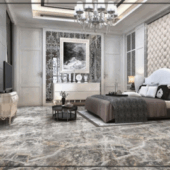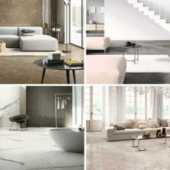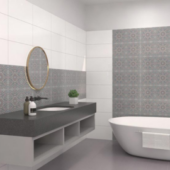When it comes to flooring, choosing the right type of tile can be a daunting task. Among the popular options available today are ceramic and vitrified tiles. But which one should you choose for your home or office? The debate between floor ceramic or vitrified tiles is one that many homeowners face, as both have their own set of advantages and disadvantages. In this blog, we’ll explore the difference between ceramic and vitrified tiles, comparing them across various parameters such as durability, cost, aesthetics, and maintenance to help you make an informed decision.
Understanding Ceramic Tiles
Ceramic tiles have been a staple in home construction for decades. Made from natural clay, these tiles are shaped, glazed, and then baked in a kiln. Ceramic tiles are available in a wide range of colors, designs, and textures, making them a versatile option for any home. They’re generally used for both floors and walls, though they are more commonly found on walls due to their relatively softer nature compared to vitrified tiles.
Pros of Ceramic Tiles
- Affordability: Ceramic tiles are generally more affordable than vitrified tiles. If you’re on a budget, ceramic is often the go-to choice.
- Aesthetic Variety: The wide variety of designs, colors, and patterns makes ceramic tiles a flexible option that can match any décor.
- Ease of Installation: Ceramic tiles are relatively easy to cut and install, making them a favorite among DIY enthusiasts.
- Comfort Underfoot: Ceramic tiles feel softer and warmer underfoot compared to vitrified tiles, which can be a plus during colder months.
Cons of Ceramic Tiles
- Porosity: Ceramic tiles are more porous, making them prone to absorbing water and stains if not sealed properly. This makes them less suitable for high-moisture areas like bathrooms and kitchens.
- Durability: While durable, ceramic tiles are less resistant to wear and tear than vitrified tiles. They can crack or chip under heavy impact.
- Maintenance: Ceramic tiles require regular maintenance, especially if they’re installed in high-traffic areas. Grout lines can also become dirty and may need frequent cleaning.
Understanding Vitrified Tiles
Vitrified tiles are a newer, more modern alternative to ceramic tiles. These tiles are made by combining clay with silica, which is then subjected to high temperatures to create a non-porous, glass-like surface. Vitrified tiles are denser, harder, and more durable than ceramic tiles, making them an excellent choice for flooring, especially in high-traffic areas.
Pros of Vitrified Tiles
- Durability: Vitrified tiles are extremely durable and can withstand heavy foot traffic, making them ideal for commercial spaces as well as busy households.
- Low Porosity: These tiles are almost non-porous, which means they absorb very little water. This makes them a better choice for areas exposed to moisture.
- Ease of Maintenance: The non-porous nature of vitrified tiles makes them resistant to stains and easy to clean. A simple mop with water is usually enough to keep them looking new.
- Uniformity: Vitrified tiles are available in a wide range of designs that mimic natural materials like marble or wood, offering a uniform look without the inconsistencies you might find in natural stone.
Cons of Vitrified Tiles
- Cost: One of the main drawbacks of vitrified tiles is their cost. They are generally more expensive than ceramic tiles, both in terms of material and installation.
- Installation: Vitrified tiles are harder and require specialized tools and skills for installation, which can add to the overall cost.
- Slipperiness: The glossy finish of vitrified tiles can be slippery when wet, posing a potential safety hazard, especially in bathrooms and kitchens.
Floor Ceramic or Vitrified: A Comparative Analysis
- Durability
When it comes to durability, vitrified tiles take the lead. They are much harder and more resistant to scratches, stains, and heavy impact compared to ceramic tiles. If you’re looking for flooring that will last for years without showing signs of wear and tear, vitrified tiles are the better option.
- Aesthetics
Both ceramic and vitrified tiles offer a wide range of designs, colors, and textures. However, vitrified tiles often mimic natural materials like marble, granite, and wood, giving them a more premium look. On the other hand, ceramic tiles are better for artistic designs, as they can be easily glazed and painted in intricate patterns.
- Cost
The cost difference between ceramic and vitrified tiles is significant. Ceramic tiles are generally cheaper, making them a good option for those on a tight budget. However, if you’re willing to invest a bit more upfront, vitrified tiles offer better durability and lower maintenance costs in the long run.
- Maintenance
Vitrified tiles are easier to maintain due to their non-porous nature. They resist stains, and their grout lines do not get as dirty as those of ceramic tiles. On the other hand, ceramic tiles may require regular sealing and more frequent cleaning to keep them looking good.
- Installation
Ceramic tiles are easier to cut and install, which could save you on labor costs if you’re hiring professionals. However, they require more careful handling to avoid cracking. Vitrified tiles, being denser and harder, are more challenging to install but offer a more durable finish once in place.
- Environmental Impact
Ceramic tiles are often considered more eco-friendly as they are made from natural clay. However, vitrified tiles, due to their long-lasting nature, reduce the need for frequent replacements, making them a sustainable option in the long run.
Ceramic vs Vitrified Tiles for Floor: Final Verdict
Choosing between floor ceramic or vitrified tiles depends largely on your specific needs, budget, and the area where you plan to install them.
– Choose Ceramic Tiles If:
– You are on a tight budget.
– You prioritize aesthetic variety and artistic designs.
– You need a flooring option that is comfortable underfoot.
– Choose Vitrified Tiles If:
– You want a highly durable and long-lasting floor.
– You prefer low-maintenance flooring that is resistant to stains and scratches.
– You are looking for a premium, uniform finish that mimics natural materials.
Conclusion
Both ceramic and vitrified tiles have their pros and cons, and the choice between them will ultimately depend on your individual needs and preferences. While ceramic tiles offer a budget-friendly option with a wide range of designs, vitrified tiles provide superior durability and low maintenance, albeit at a higher cost.
If you’re still unsure about which tile is best suited for your flooring project, why not see them in person? For expert advice and a wide selection of both ceramic and vitrified tiles, visit Chandan Marbles. We are located on Nagar Rd, opposite Forest Park near Yadav Petrol Pump in TulajaBhawani Nagar, Lohegaon, Pune. Feel free to call us at +91 8888843560 or visit our website at www.chandanmarbles.com






